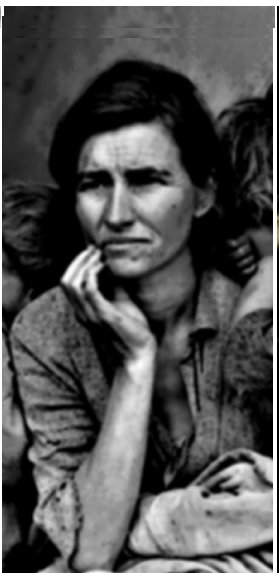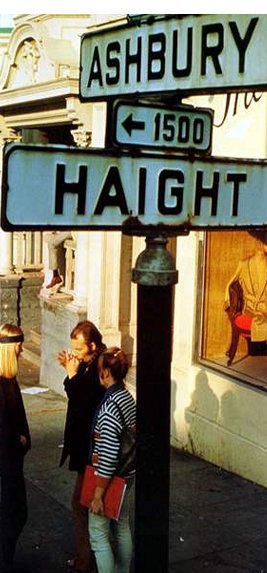Latinos: Demographic Predominance Natalya Rahmann
David E. Hayes-Bautista graduated from UC
Berkeley and earned an MA and PhD in Medical Sociology at the University of
California Medical Center, San
Francisco. He is
currently Professor of Medicine and at the David
Geffen School
of Medicine at UCLA. Dr. Hayes-Bautista is Director of the Center for the Study
of Latino Health and Culture and researches the dynamics and processes of the
health of the Latino population in California.
From its colonial beginnings to its
modern day corporate success, California
has largely been influenced by Latinos. In La Nueva California: Latinos in
the Golden State, David E. Hayes-Baustista
examines the history of Latinos in California
and suggests that their future is brighter than expected. California¡¦s
first three spurts in population growth -the Gold Rush, railroad-facilitated
boom, and post-World War II baby boom- differed little from the rest of America.
However, the fourth demographic boom, occurring between 1975 and 1990, was
largely due to Latino immigration and births. Today, the Latino numbers ¡§surge
and resurge¡¨.1 Every year since 2001, over
half the state¡¦s babies are Latino. Though most consider population growth a
blessing, many Californians fear the Latino boom. Instead of enthusiasm, this
growth spurs resistance and apprehension. Far from welcoming the newborns and
newly arrived immigrants, some Californians support state-driven initiatives to
end affirmative action, limit immigration, end bilingual education, and keep
Latinos from becoming a majority. Many fear the changes in identity and society
in a California where half the
population is Latino. Since the beginning of the twentieth century, American
society has portrayed Latinos as a backward, impoverished underclass. A state
overrun by dysfunctional immigrants would mean a grim future for California,
but Hayes-Bautista opposes this portrayal of Latinos. He argues that Latinos do
not deserve the reputation they possess, and that Americans must accept the
Hispanic presence in order to create a cohesive, productive future for California.
Hayes-Bautista opens his book with
a history of Latinos in California
before their population boom. The first two chapters
cover California¡¦s beginnings up
until 1970. During this time period, Americans saw Latinos as dirty and
backward. Richard Henry Dana visited California
in 1835 and called the Californios ¡§an idle, thriftless people¡¨ comprised of
¡§hungry, drawling, lazy half-breeds¡¨ .2 Americans accepted Dana¡¦s
observations, and racism towards Latinos began. In 1870, whites prohibited
Latinos from holding political office, and Latinos gradually began leaving the
state. However, in 1910, the Mexican Revolution forced one-tenth of Mexican
citizens to flee to California.
Legal residential segregation forced immigrants into barrios, and Latinos began
to exist as a separate minority subculture. Willingness to take low-paying jobs
made immigrants tolerable to the whites, who viewed Latinos as cheap labor.
With the Great Depression, however, came anti-Latino rhetoric. Politicians
blamed Mexicans for unemployment, accusing them of stealing jobs from ¡§real¡¨
Americans. Suddenly anyone who ¡§looked Mexican¡¨, even a citizen, was liable to
be forcibly deported from their jobs. In Los Angeles
and San Francisco, immigration
agents held Latinos captive before transporting them to Mexico.
Deportation caused the number of Mexican immigrants in California
to fall from 199,165 in 1930 to 111,900 in 1940. The Zoot
Suit Riots in 1942 further tarnished Latino reputations and caused widespread
fear of this ¡§vagabond¡¨ race. Suddenly, all things Latino were considered
un-American and evil. Parents refused to teach their children Spanish and
encouraged them to embrace American culture. However, many children grew up
curious about their nationality. With the civil rights, anti-war, gay and
lesbian, and women¡¦s rights movements arrived the
Chicano movement. Chicanos were young revolutionaries, usually U.S.-born, who
rejected American culture in favor of Latino nationalism and Marxism. Though
¡§Chicano¡¨ is a derogatory term meaning juvenile delinquent, the young Latinos
embraced the name. Despite taking great pride in their nationality, less than
twenty percent of Latinos born in the U.S.
spoke Spanish and almost none had visited Mexico.
The Chicano movement included Cesar Chavez and the United Farm Workers,
numerous high school ¡§blowouts¡¨ in East LA, student
strikes, and the Brown Beret occupation of Catalina. Chicanos pushed for better
education, better healthcare, higher wages, more libraries, and greater
political involvement. Though the Chicano movement began to die in the early
1970¡¦s, it encouraged Latino involvement in higher education and new
immigration. By 1969, the American Association of Medical Colleges required
medical schools to admit significant numbers of Latino applicants. With the end
of temporary labor programs and national-origin quotas, California
once again became the perfect place for Latino immigration.
In the second section of his book,
Hayes Bautista describes the great wave of Latino immigration between 1970 and
1990 and its effects on California.
When the bracero program ended, the Mexican guest
workers returned to their American jobs, but now returned as immigrants with
families. Along with the laborers came foreign-educated Latino doctors, who
served the Hispanic population and formed the California Hispanic American
Medical Association. Despite the small handful of white-collar professionals,
most immigrants were poor and uneducated, bringing new social problems. Because
minorities tended to have higher poverty levels, discussion of poverty now
meant discussion of minority issues. President Johnson committed himself to
ending poverty, but in the process portrayed Latinos as a permanent underclass.
With the lowest percentage of high school graduates and lowest average
household income, Latinos threatened to corrupt California.
Many whites feared that easy access to welfare and benefits would discourage
the foreigners from working. However, between 1940 and 1980, Hispanic males had
the highest labor force participation, lowest percentage of welfare users, and
highest percentage of nuclear families out of all minority groups. Despite
this, Latinos remained the poorest minority, earning a less than their Asian,
African-American, and Native American counterparts. The poverty level fell,
however, as Latinos achieved higher education. When the Hispanic population
boom saved the University of California
from closing a campus, Latinos received new opportunities for education.
President Nixon noticed the potential of minority groups and implemented
affirmative action. Immigrants rejected American restrictions, and ¡§Latinos
began to define Latinos¡¨.3 Latinos spoke Spanish, introduced
contemporary Latin American culture, and influenced the food industry and
corporate world. As the immigrant presence increased from twenty percent in
1960 to fifty percent in 1990, Spanish became the preferred language of half
the Hispanic population. By 1990, the most popular newspapers, TV shows, and
radio stations in California had
Spanish editions. Since Latinos typically spent eighteen percent more than
non-Hispanics when buying food, the food industry began to cater to the Latino
market, reaping huge rewards. By 1993, salsa outsold catsup and tortillas
outsold white bread. Executives realized that marketing to Latinos would mean
future success in California, and
the Latin Business Association began to make great achievements. The Latino
population boom changed Latinos from an unwanted minority to a valuable
American sub-culture.
The book¡¦s third section covers the
Proposition 187 crisis and ensuing events during the years 1990-2004. Immigrant
Latinos moved into deserted ghettoes, restored them, and brought Southern
California¡¦s cities back from the brink of social and economic
death. However, the 1992 riot in Los Angeles
soon rekindled widespread fear of Latinos, especially illegal immigrants. Many
Americans blamed illegal aliens for all social problems, and anti-Latino rhetoric
once again became the norm. The media blamed Latinos for crime and low school
rankings. Some Americans even accused immigrants of spying, claiming that they
could not be loyal to both their homelands and the United
States. Governor Wilson¡¦s tagline ¡§Our
Borders are Out of Control¡¨ claimed that between two and five thousand illegal
immigrants snuck across the border every night. Soon afterward Proposition 187
ended affirmative action and bilingual education. The ¡§Civil Rights Initiative¡¨
forbade the state from providing an advantage due to race, ethnicity, or
gender. Countless attacks destroyed Latino pride, and Latinos began to leave
the state. A widespread message that presented a positive Latino image was
needed. The answer came in the form of the Maldef
Public Announcement, a TV commercial that portrayed Latinos as normal,
middle-class, patriotic Americans. Latinos appreciated the realistic
commercial, while many whites felt ¡§the commercial contradicted what they knew
about Latinos¡¨.4 Though they noticed the
Latino work ethic, they felt that since few Latinos achieved success even
though the U.S.
offered opportunities to all, Latinos could not be true Americans. However,
statistical evidence proved that most immigrants move up the socioeconomic
ladder: after twenty five years in America,
eighty percent lived above the poverty level. As time went by, more Latinos
joined the middle class and gained a more important role in American society.
In his fourth section,
Hayes-Bautista evaluates the past of Latinos in California
and makes predictions for the future. Instead of making the state un-American,
Latinos give California a ¡§new
regional identity¡¨.5 The large population
of Latinos creates a self-sustaining economic base and distinctive culture. By
2040, California will be
forty-eight percent Latino, creating the first Hispanic majority in the United
States. This majority may mean either
prosperity or doom, depending on the strength of California¡¦s
economy after years of intensive policy work and public investment. The high
average Latino life expectancy may help the state¡¦s overall health, and
education in Californian history may aid the formation of civil society.
However, a greater concentration of Latinos may lead to riots and violence,
with under-funded and underperforming public schools. If few Latinos go on to
medical school, there may not be enough physicians to sustain the exploding
population. At the present, Latino education is in jeopardy. Latinos have never
been proportionately represented by the University
of California¡¦s student body, and
every year fewer Latinos attend college. The reason Latinos do not reach their
educational potential is because they do not start with parental advantages.
After 2010, baby boomers will leave the workforce and workers will increasingly
be Latino. The key to whether California¡¦s
future is prosperous or bleak lies in the level of Latino educational
attainment.
Hayes-Bautista writes his book to
educate Californians about a minority that will soon become a majority. This
demographic boom will redefine California¡¦s
identity. Because the media often portrays Latinos in a negative light, a book
of this nature is necessary to end the current prejudice and prepare
Californians for the future. Some Californians do not know the struggles their
Latinos neighbors experience and hope the ¡§Mexican problem¡¨ will go away. With
immigration and the Latino population¡¦s high growth rate, however, there is no
chance of Latinos ¡§becoming extinct¡¨.6 Instead of rejecting Latinos,
Californians must embrace them. Whites and other minorities will soon be
outnumbered. In order to survive in a Latino-dominated state, non-Hispanics
must understand Hispanic realities.
As Director of the Center for the
Study of Latino Health and Culture, a resident of California,
and a Latino himself, Hayes-Bautista is a reliable source on his subject. His
job as a professor in medicine at UCLA helps him experience firsthand the
present level of education of Latinos and the status of Latino healthcare.
Hayes-Bautista believes that in order to understand the future, we must
understand the past. Californians cannot handle a state that is half Latino if
they do not understand the history of their neighbors and the surprisingly
similar traits they share. He emphasizes the importance of ¡§a well educated
workforce¡¨ and frequently repeats that only through education can Latinos
escape poverty and compete with whites for the jobs and status they deserve.7
Most importantly, Hayes-Bautista feels that Latinos
embody the American Dream and are no different from other Americans. Their work
ethic and commitment despite poverty represent the core American values: hard
work and dedication. Time and work will bring Latinos out of poverty and into
mainstream American society, although many Latinos have already achieved middle
class status. As the ethnic character of California
develops, the state will either promote a ¡§culturally dynamic society¡¨ or a
society where ¡§ethnic groups are at war with each other¡¨ (12). Frequent usage
of statistics, data, and graphs support Hayes-Bautista¡¦s views and show the
validity of his statements. An objective viewpoint saves him from letting his
own opinions get in the way of historical fact, adding to the reliability of
his statements and arguments.
Critics say that the main
weaknesses of the book lie in its outdated sources and its ignorance of many
aspects of Mexican immigration. Most of the books Hayes-Bautista cites are at
least thirty years old, making the book feel ¡§stuck in
the 1970¡¦s¡¨.8 The lack of a current historical narrative makes the
reader question the reliability of the sections that involve more recent
events. Reviewer Gilbert Gonzalez points out the books greatest flaw: a
complete ignorance of ¡§free trade¡¨ and Mexican migration, including the North
American Free Trade Agreement (NAFTA). Destroying the Mexican economy, NAFTA
lowers import barriers to U.S.
agricultural products, forcing Mexican farmers into bankruptcy. In the future,
NAFTA may force thousands of bankrupt farmers to flee to California.
Although free trade heavily impacts Latino society, Hayes-Bautista disregards
the topic entirely. Nonetheless, most critics feel that despite small weakness,
Hayes-Bautista presents a strong work.
Even so, Hayes-Bautista tends to
repeat his statistics, making certain aspects of the book extremely monotonous.
However, this frequent use of statistics also adds to the believability of his
statements. The wide range of issues covered help readers to understand Latinos
and better prepare for the future ahead. Furthermore, an optimistic tone
¡§inspires confidence in the future of American identity¡¨.9 A
synopsis of events from California¡¦s beginnings through 2040 makes the work
feel complete, and the analysis and commentary show the author¡¦s great passion
for the subject. A bit of repetition does little to detract from the admirable
book.
During the twentieth century, California
grew from a reflection of standard American society to a state with a culture
and people of its own. During the first three non-Latino population booms, California
was ¡§not unlike the rest of America¡¨,
only ¡§a bit ahead of the trends¡¨.10 Californians accepted the racist
definitions of Latino and hoped that the ¡§Mexican problem¡¨ would go away.
Atlantic Americans killed early Latino influence in California,
and, after Dana¡¦s widely published warning against the savages of the West,
portrayed Latinos as violent troublemakers. Ignoring their southern neighbors,
Californians accepted Atlantic inventions and ideas, such as automobiles and
white supremacy. However, the growing Latino presence in California
set it apart from the rest of the country. Diversity in California
made it different from the all-white regions of the United
States. Latinos soon became a valuable
market and changed the faces of the Californian food industry, business world,
and corporate world forever. More Californians became bilingual, and the
popularity of Latin American pop culture differed from the conservative Anglo
sections of the rest of the country. Eventually, the presence of Latinos would
become the very essence of California¡¦s
identity.
One of the largest, most diverse,
and most Latino states, California
can be seen as a model of commercial, economic, and social success for the rest
of the country. Rags to riches stories of immigrants can rekindle faith in the
American Dream. Most importantly, California
will show that a state of Latinos can be successful. Americans consider Latinos
backward, but Hayes-Bautista realizes their potential. A state where ¡§diversity
is approached from a Quaker-like stance¡¨ will be examples for the nation.11
Americans consider California the
picture of beauty and success. California
is the land of opportunity, for Americans and for Latino immigrants. The future
of Latinos in California will
show the country the state¡¦s tolerance, perseverance, and success.
Hayes-Bautista presents a
relevant issue in his book. Educating people about the past to prepare for the
future, Hayes-Bautista has created an informative historical work. Presenting
Latinos as a misunderstood minority, Hayes-Bautista encourages Californians to
¡§make [their] own history¡¨ and accept Latinos.12 Bursting with
statistics, analysis, and optimistic hope, La Nueva California: Latinos in
the Golden State is an excellent representation of Latinos and the future
of California.
1. Hayes-Bautista, David. La Nueva California:
Latinos in the Golden State.
Los Angeles: University
of California Press, 2004 1.
2. Hayes-Bautista, David 16.
3. Hayes-Bautista, David 89.
4. Hayes-Bautista, David160.
5. Hayes-Bautista, David 207.
6. Hayes-Bautista, David 37.
7. Hayes-Bautista, David 228.
8. ¡§La Nueva California-Latinos in the Golden
State.¡¨ Book In Print.com 01 June 2005. 01 June 2005 <http://www.booksinprint.com/merge_shared/detao;s.asp?item_uid=
57065725& viewItemIndex=0&n>.
9. Gonzalez, Gilbert. ¡§La Nueva California:
Latinos in the Golden State.
(Book Review).¡¨ High Beam Research 22 March 2005. 01 June 2008 <http://www.highbeam.com/DocPrint.aspx?DocId=
1G1:138313160>.
10. Hayes-Bautista, David 1.
11. Hayes-Bautista, David 228.
12. Hayes-Bautista, David 226.










